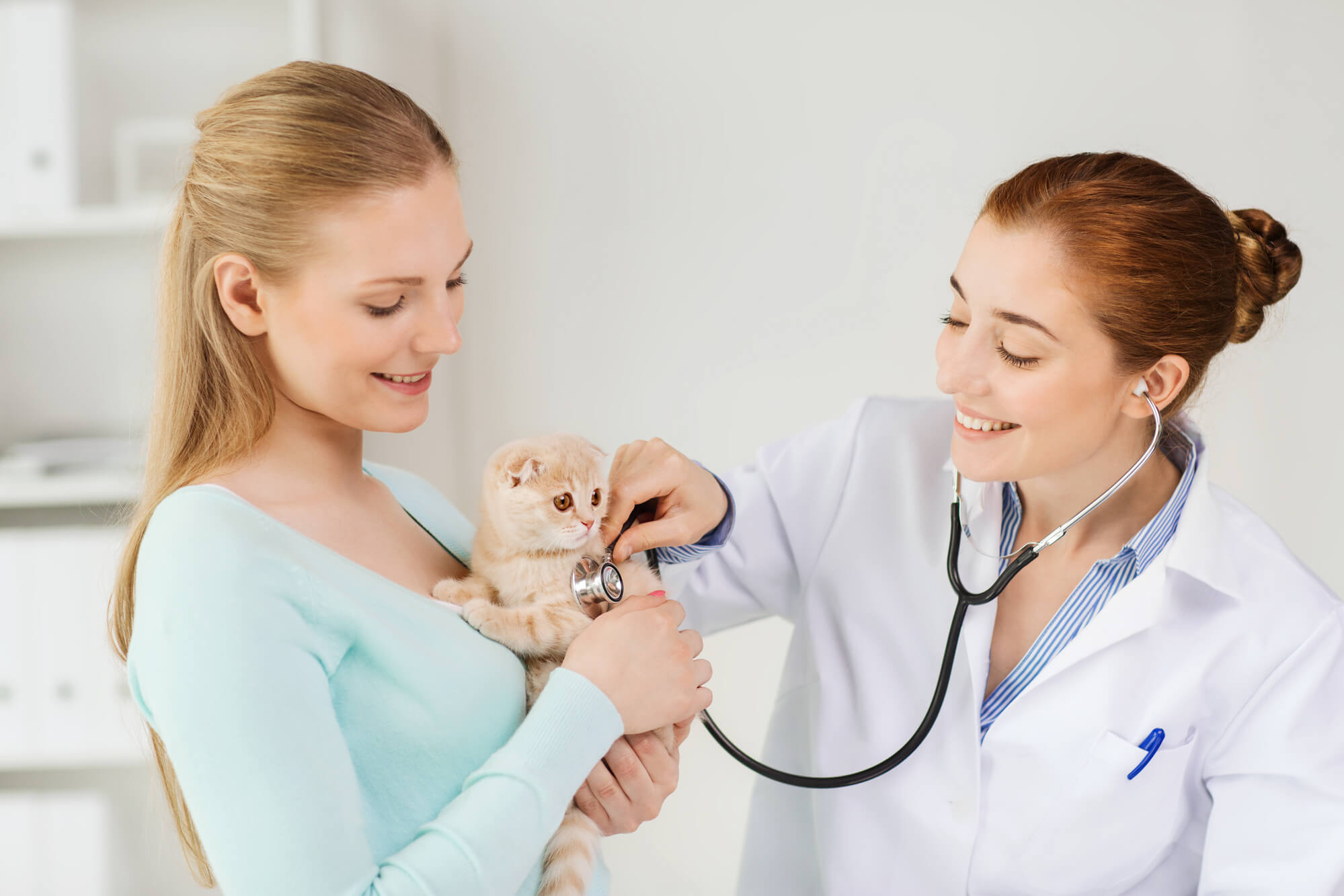Paying close attention to your cat’s health will make sure that your four-pawed friend will live a longer, happier life. In this article, we’re going to share some tips related to cat’s health, starting from general recommendations and ending with more specific advice, such as vaccines, insurance options, etc.
What does a healthy kitty look like?
Two key signs of a healthy cat are good appetite and cheerful behaviour. As for the cat’s physical appearance, here’s a checklist of what you should consider when determining if your cat is healthy:

- clean ears,
- no hair clumps and/or bald spots,
- clean eyes,
- a moist nose without discharge,
- normal weight.
Ask your vet to indicate your cat’s normal weight and regularly monitor it. Obesity is a common problem, so maintaining your cat's optimal weight will help maintain its health. A cat with an optimal physical condition has a lean, “inverted” belly (when viewed from the side). Additionally, the animal’s ribs are not visible, but you can easily feel them if they are not hidden by a layer of fat.
Vaccines
Cats need to visit a vet once a year to get vaccinations. We recommend keeping a vaccination log, with both the vaccines received and the next scheduled vaccinations. Kittens typically take the first course of vaccination (2 vaccinations), and then, starting from the age of one year, they receive an annual secondary vaccination.

In the United States, recommended core vaccines include Feline Herpesvirus 1, Feline Panleukopenia, and Feline Calicivirus. In addition, depending on your cat’s lifestyle risk factors, your vet may recommend some non-core vaccines such as Feline Leukemia Virus (FeLV), Feline Immunodeficiency Virus (FIV), and Bordetella bronchiseptica.
Vet visits
In addition to annual vaccinations, we recommend to take your cat to preventive checkups every 6 months. This will significantly reduce the risk of teeth, hair, and internal organ diseases. The vet can evaluate the animal’s condition and give advice on care. For example, they will:

- examine the cat's ears for parasites, such as ear mites;
- check the mouth for signs of tartar or gum disease;
- look at the eyes for general retinal health;
- survey the skin for any lesions or bumps;
- listen to the heart and lungs.
Grooming
Grooming includes taking care of the cat’s hair, claws, and teeth.
Make hair care a part of your cat’s routine from a very young age. This practice will help you spot external parasites and wounds on the skin. In addition, removing dead hair and maintaining a healthy coat will reduce the risk of hair lumps in your pet’s stomach.

Long-haired cats require daily hair grooming; for other breeds, once a week is enough.
Here’s how to groom your cat’s hair:
- For short-haired cats, use a metal comb with short and frequent teeth as well as a natural bristle brush to remove dead hair every week.
- Gently comb the cat in the direction of hair growth.
- Use a bristle brush to raise the fur towards the head and then smooth it again.
- For longhair cats, use a steel comb daily.
- Carefully cut off the clumps with blunt scissors. If you are afraid of accidentally cutting the cat’s skin, consult your vet.
To reduce the risk of tartar, brush your cat’s teeth daily with a special toothpaste and brush. When you become more familiar with the cat, you will notice that the claws are divided into layers. When climbing a tree or using claws, cats drop the outer layer hiding a new and sharper claw. This is why active and healthy cats rarely need claw trimming. But home-living and aging cats need more attention. If your cat needs tartar removal or claw trimming, contact your vet.
Neutering / Spaying
Neutering / spaying is recommended for cats that have reached 7-9 months. By this age, the cat’s body has already formed but they do not have any sex hormones yet. Additionally, all breeds develop differently and thus have different timelines, so better consult a specialist before making a final decision on neutering or spaying.
The next decision is choosing a hospital or clinic to carry out the procedure. Here’s a tip from us: if you visit the local humane society, you’ll pay $25-$60. This price is significantly lower than in a hospital, where you’ll pay $300-$500 for the same procedure.
Insurance
There are several cat insurance providers available in the United States. Here’s a brief overview of some of them:
PetFirst
Cost: Starting at $9 per month.
Pros: Quick processing of claims, 80% reimbursement, a routine care rider to offset wellness expenses.
Cons: Does not cover routine wellness, preventive care, and organ transplants.
Embrace
Cost: $15 to $20 per month.
Pros: Diminishing deductible features on each policy.
Cons: Does not cover pregnancy and breeding as well as preventive care.
Healthy Paws
Cost: Starting at $15 per month.
Pros: No maximum limits on payouts, no per-incident and lifetime caps, premiums don't rise with the pet's age.
Cons: Does not cover routine checkups and most dental care.
Petplan
Cost: On average $40 per month.
Pros: Covers alternative and homeopathic therapies as well as online vet visits.
Cons: Does not cover preventive care.
Summary
As Antoine de Saint Exupéry said in his novel The Little Prince, “You become responsible forever for what you have tamed”. As an owner, you are fully responsible for your pet’s health and wellbeing. Don’t forget about regular checkups and contact your vet as soon as you notice something unusual in your cat’s behaviour. Stay healthy!

